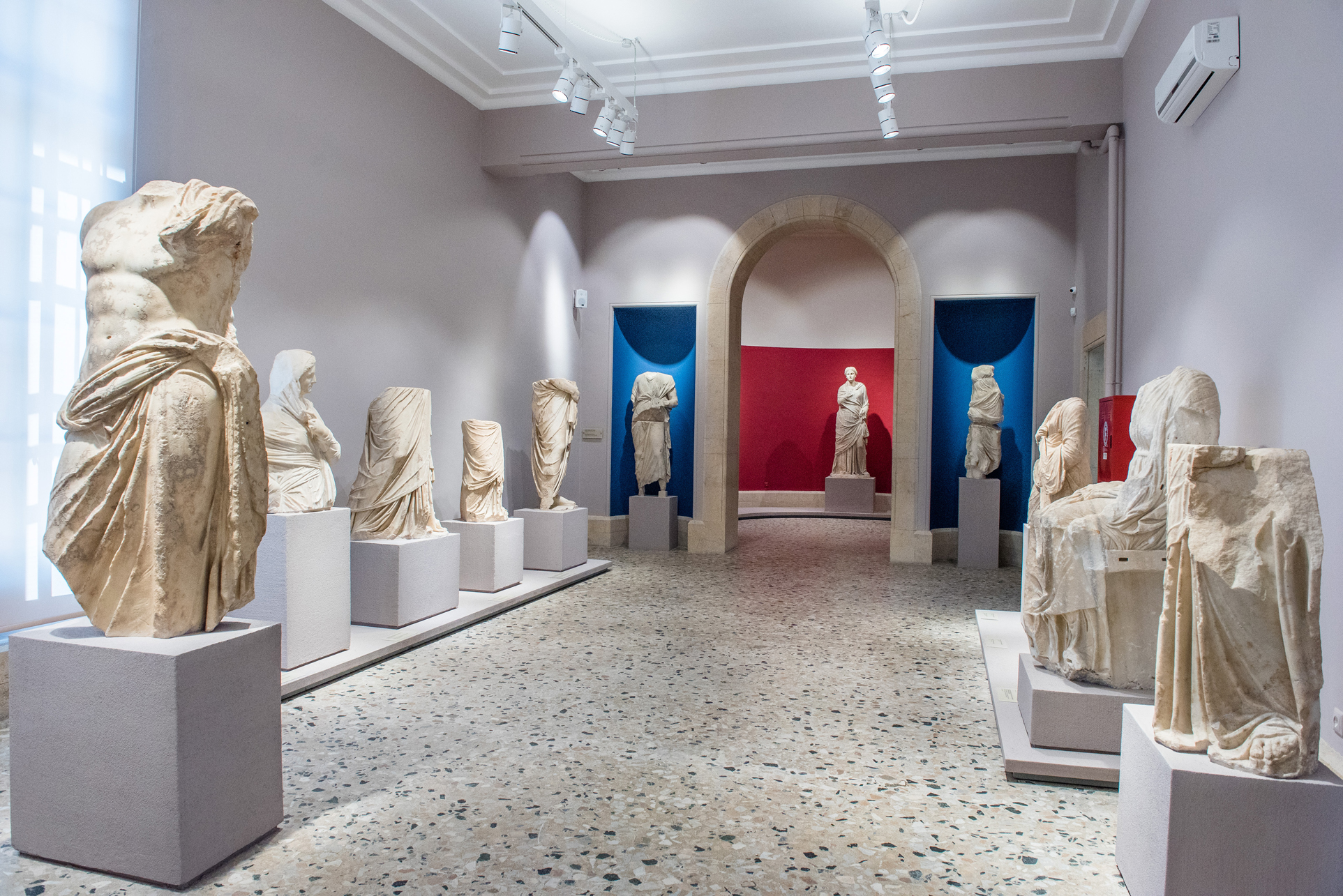Kos Archaelogical Museum
The Archaeological Museum of Kos, housed in an impressive interwar building (1936), opened its renovated gates to the public on September 18, 2016. Used to function mainly as a sculpture gallery, showing in a traditional way the sculptures mainly found during the Italian excavations on the island, today, it attractively tells, by using modern means, the long and rich prehistory and history of the island of Kos from the 4th millennium BC to the 2nd - 3rd century A D., through highlighted objects derived from the numerous excavations undertaken by the Greek Archaeological Service in the island.
The god Asclepius and Hippocrates welcome the public in the bright peristyle atrium of the Museum, which copies one of the characteristic elements of the architecture of Greek and Roman houses. Both are depicted on the famous mosaic floor of the so-called “House of Asclepius” (2nd - 3rd century AD.), surrounded by the figures of Hermes, Dionysus, Artemis, Hygeia and Asclepius, and two male statues, most probably representing the ladies who once lived in the luxurious house, all of them sculptural elements from a Roman villa, known as
the “House of the Rape of Europe”. The great collection of sculpture is hosted in the west hall of the ground floor with the circular end, showing masterpieces from the end of the 5
th to the 1
st century BC. , such as a statue of the so called Hippocrates, small masterpieces credited to the sons of Praxiteles, the relief with the representation of the three
Charites, and female figures dressed in the famous gowns of Kos, as well as robust male figures. The hall houses a total of twenty-nine sculptures, which reveal in the eyes of the visitor the development of the
plastic art in Kos, corresponding to important stages in the history and culture of the island, as they echo the dynamics of the ancient city and revive moments of the daily life of women and men, both in public and private areas. Moreover, along the west wall of the same hall stand imposing gowned figures of men and women of the 2
nd century BC. found in the Roman Odeum, in the east niche dominates the dancing figure of Nike, while in the east wall female figures dated to the 1
st century BC., along with the colossal seated statue of Demeter or
Kybele from Kephalos, are exhibited.
The circular projection of the hall is dedicated to the Woman of Kos. It houses two larger than natural size female figures from the Roman Odeum, dated to the end of the 2nd century B.C., The rendering of the thin and delicate gown is reminiscent of a kind of silk textile produced from an indigenus to the island special type of worm, as well as to the fabric maker, Pamfile, the daughter of Plateus, who was said to be the first to weave the famous Koan garments.
In the eastern hall one can the visitor can find the rich offerings dedicated to several deities adorned into the numerous ancient sanctuaries of the island and mainly to the beloved of the Koan women goddess Demeter.
One can also visit the sanctuaries of the ancient Agora, which are known from
epigraphic testimonies, such as calendar of sacrifice, sacred laws and honorary resolutions. Representative finds on the worship of Eastern deities on the island can also be found here.
On the first floor, around the walls of the covered atrium, three halls are formed. In the western hall the visitors will travel back to the distant time through selected personal items dating from the 4th millennium to the 5th century BC.
In the elongated case along the east wall of the hall representative findings from the Early to
the end of the Late Bronze Age, along with imports from Minoan Crete and the great Mycenaean centers, demonstrate the continuous occupation of the prehistoric settlement of Serayia (Serraglio), in the heart of today's capital of the island, since the 3rd millennium until
the c. 1100 BC. century BC. In other parts of the western hall masterpieces of ceramic art, jewels and
bronze weapons of the Mycenaean and Geometric period, objects for daily use of the Geometric period are presented, while selected archaic and classical
pots show that beyond the high
artistic quality of the pottery itself, the island was prosperous due to travelling and commercial exchanging with other Greek cities.
In the south room, which is divided into two large sections, aspects of private and public
space are presented. Everyday life scenes emerge from the
elongated show case along the north wall of the hall, showing the interior of a Hellenistic house, with details of the table
and coarse ware pottery, women and children daily use objects, weaving equipment for the famous Koan textiles and a
banquet.
Amphorae for the transportation of the famous local wine, coins that circulated on the island, workshops and the luxury glassware for the famous Koan perfumes are on display in smaller separate sections within the same hall.
In the eastern hall -a room with view to the Gate of the Medieval Forum and the ancient Agora- representative
finds from the ancient cemeteries show the timeless image of the island in prehistoric and historical periods. Several grave offerings since middle 3rd millennium BC until early Roman times narrate short personal stories which illustrate aspects of daily life in different eras revealing
man’s same constant agony and bewilderment when facing death. Death cannot be defeated, whether it concerns rich or poor, young, old and mainly a child. The real consolidation
for remembrance, collective or individual memory
and expression of love for the deceased by their own people could be by offering objects which accompany them during their endless dive into the underworld, an continuous journey in the distant or near time and space which lasts for thousands of years on the island of Kos and throughout the world.
English and Greek text by Ms Stamatia Marketou, Archaeologist class A’ - Antiquities Ephorate of Dodecanese.




